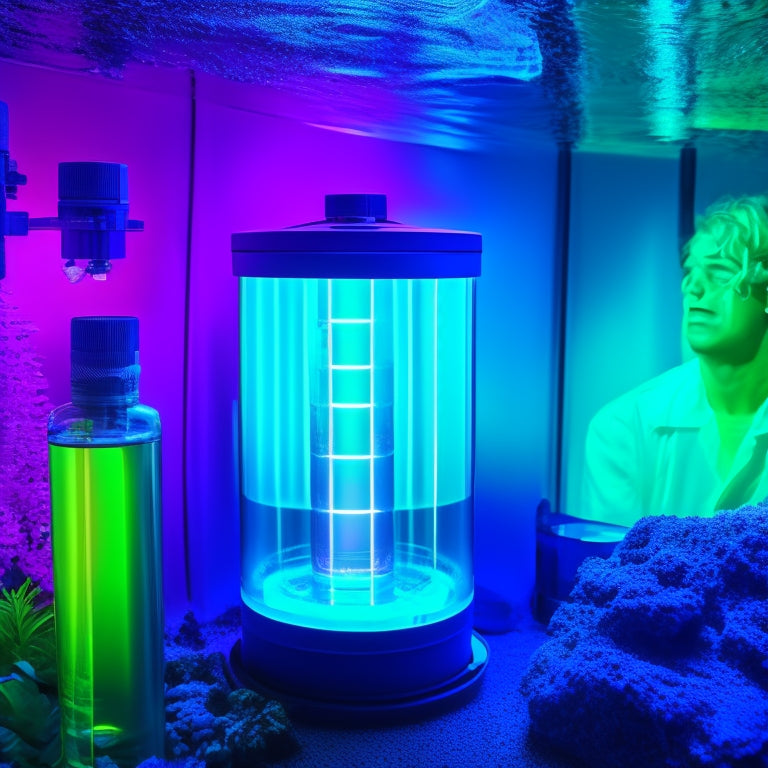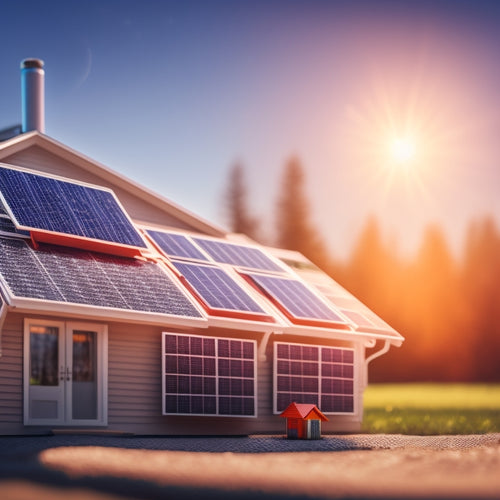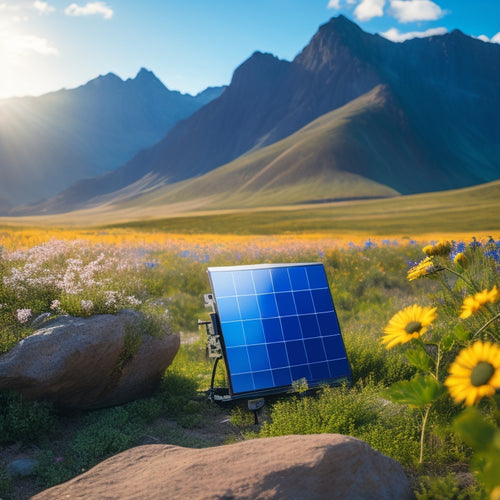
Ultraviolet Water Purification Removes What Contaminants
Share
Ultraviolet (UV) water purification targets and effectively removes harmful pathogens from your water supply. It's particularly efficient against bacteria like E. coli and viruses, such as enteroviruses, achieving up to 99.9% reduction rates. The UV light renders these microorganisms incapable of reproduction by damaging their DNA. This process doesn't leave harmful chemical residues, making your water safer and more environmentally friendly. However, the effectiveness of UV treatment can depend on factors such as water clarity and specific contaminants present. Understanding these subtleties can enhance your water purification strategy and overall safety.
At a Glance
- UV water purification effectively eliminates a wide range of pathogens, including bacteria like E. coli and Salmonella.
- It significantly reduces viral pathogens, achieving up to 99.9% reduction rates for enteroviruses.
- UV light disrupts DNA of harmful microorganisms, rendering them incapable of reproduction.
- Effective against microbial contaminants in both surface and well water sources, ensuring safe drinking water.
- UV systems do not leave harmful chemical residues, providing a chemical-free purification solution.
Proven Effectiveness Against Pathogens
Ultraviolet (UV) water purification systems demonstrate high efficiency in eliminating bacteria, often achieving up to 99.9% reduction rates.
These systems employ advanced UV-C LED technology, which is energy-efficient and compact, effectively targeting pathogens.
When it comes to viruses, these systems can inactivate a wide range, making them a reliable choice for pathogen control.
Understanding the specific mechanisms behind these capabilities is essential for optimizing UV systems in various applications.
Bacteria Elimination Efficiency
Effectively eliminating bacteria, ultraviolet (UV) water purification systems demonstrate proven efficiency against a wide range of pathogens. These systems operate by emitting UV light, which disrupts the DNA of bacteria, rendering them incapable of reproduction and infection.
It's vital to understand that not all bacteria respond uniformly to UV treatment; factors like bacterial resistance can influence outcomes. However, most conventional pathogens, including E. coli and Salmonella, show significant susceptibility to UV exposure.
To meet purification standards, UV systems must deliver a specific intensity and duration of light to achieve effective disinfection. Generally, a minimum dose of 40 mJ/cm² is recommended to guarantee a high level of bacterial inactivation. This efficacy is particularly important in scenarios where water quality is paramount, such as in healthcare settings or disaster relief situations.
Moreover, UV purification complements other methods, enhancing overall effectiveness against resistant strains. While it doesn't provide residual disinfection, its rapid action on bacteria makes it an indispensable tool in water treatment.
Understanding these efficiencies allows you to make informed choices about water purification options that align with your freedom to access clean, safe water.
Virus Inactivation Capabilities
When it comes to inactivating viruses, UV water purification systems have shown extraordinary effectiveness against a variety of viral pathogens.
These systems employ specific UV wavelengths, typically around 254 nanometers, which are highly effective at disrupting the DNA and RNA of viruses. This disruption effectively halts virus transmission, rendering the pathogens inactive.
Research demonstrates that UV purification can neutralize numerous viruses, including enteroviruses and noroviruses. By utilizing the power of UV light, these systems can achieve up to a 99.9% reduction in viral load within seconds, depending on the exposure time and intensity of the UV light.
It's essential to note that the effectiveness of UV treatment hinges on factors such as water clarity, flow rate, and the presence of particles that might shield viruses from UV exposure.
As a result, pre-treatment may be necessary for turbid water sources.
Cost-Effective Water Treatment
When considering water treatment options, you'll find that ultraviolet (UV) purification stands out for its long-term savings.
The technology requires minimal maintenance, which means lower operational costs over time.
Long-Term Savings
By investing in ultraviolet (UV) water purification systems, you can achieve significant long-term savings in water treatment costs. Though the initial investment may seem high, the true value lies in the long-term benefits these systems provide.
Unlike traditional water treatment methods, UV systems require minimal chemical usage, which translates to lower ongoing expenses.
Moreover, UV purification operates with exceptional efficiency, often requiring less energy compared to alternatives like chlorination or reverse osmosis. This efficiency not only reduces your utility bills but also lessens your carbon footprint, aligning with a growing desire for sustainability.
Over time, the savings from reduced chemical purchases and lower energy consumption can offset that initial investment, making UV systems a cost-effective choice for both residential and commercial applications.
Additionally, UV water purification minimizes the need for regular filter replacements, further contributing to cost reduction. With a lifespan that can exceed a decade when properly maintained, the long-term savings become increasingly apparent.
Ultimately, embracing UV technology enables you to make a financially sound decision while ensuring access to clean, safe water for years to come.
Minimal Maintenance Requirements
With UV water purification systems, you'll uncover that they demand minimal maintenance, making them a cost-effective solution for ongoing water treatment. Unlike conventional methods, which often require routine chemical applications and filter replacements, UV systems primarily need regular checks of the lamp and quartz sleeve. This simplicity translates directly into lower operational costs.
The energy efficiency of UV systems is another key benefit. They consume considerably less power compared to traditional water treatment methods, which often rely on pumps and chemicals. You'll find that a well-maintained UV system can operate effectively for years, providing consistent water quality without the frequent interruptions that other systems may necessitate.
Moreover, system longevity is enhanced through the use of durable materials and the absence of corrosive chemicals. This resilience means you won't have to worry about premature system failures or costly replacements. Regular lamp replacements, typically every 12 months, are straightforward and can be performed without specialized training.
In essence, the minimal maintenance requirements of UV water purification systems not only reduce your workload but also contribute to long-term savings and efficiency, allowing you to enjoy clean water with peace of mind.
Key Mechanisms of Purification
In understanding the key mechanisms of ultraviolet (UV) water purification, you'll find that UV light action plays a critical role in deactivating harmful microorganisms.
This method is particularly essential for guaranteeing safe drinking water in emergency situations where contaminants may be present in natural water sources such as lakes and rivers, as highlighted by the importance of portable water purifiers in these scenarios reliable purifiers provide access.
This process involves direct damage to the DNA of pathogens, rendering them incapable of reproduction and infection.
UV Light Action
Ultraviolet (UV) light consistently disrupts the DNA of microorganisms, leading to their inactivation and ensuring water purity. This powerful mechanism hinges on the specific UV light types employed in purification systems, primarily UV-C, which operates at wavelengths of 200 to 280 nanometers. This range is particularly effective as it targets the genetic material of pathogens, rendering them incapable of replication.
When you apply UV technology, the clarity of the water plays an essential role in its effectiveness. Particles or turbidity can obstruct the path of UV light, reducing its ability to penetrate and disinfect. Consequently, maintaining high water clarity is crucial for ideal purification.
As UV light interacts with microorganisms, it causes the formation of pyrimidine dimers in their DNA. This alteration prevents the microbes from performing significant cellular functions, effectively neutralizing their threat.
The efficiency of this process is dependent on various factors, including exposure time and intensity of the UV light.
Microorganism Damage Mechanism
How does UV light specifically damage microorganisms at a molecular level? When exposed to UV light, microorganisms absorb photons, leading to the formation of pyrimidine dimers—specifically, thymine dimers in DNA. This molecular alteration disrupts normal base pairing and hinders replication, ultimately resulting in cell death.
You'll find that this mechanism is significant because it bypasses the microbial resistance that some organisms develop against traditional chemical disinfectants.
Additionally, UV light can induce oxidative stress within microbial cells, generating reactive oxygen species (ROS) that damage proteins and lipids, further impairing cellular function. This dual action of targeting both DNA and cellular integrity makes UV purification highly effective.
However, it's important to evaluate the ecological impact of UV water purification. Some microorganisms may adapt over time, developing resistance mechanisms that can challenge long-term efficacy.
As a result, while UV light is a powerful tool for disinfecting water, awareness of microbial resistance patterns is essential for maintaining its effectiveness. Understanding these damage mechanisms allows you to appreciate the technology's role in safeguarding water quality while recognizing the need for ongoing research into its ecological implications.
Selecting Based on Water Source
When selecting a water purification system, understanding the source of your water is essential. Surface water often contains higher levels of pathogens and organic contaminants, necessitating a strong UV treatment approach.
Additionally, implementing a well-designed irrigation system can enhance water quality management by guaranteeing that only clean water is used for irrigation, especially in areas prone to contamination high-efficiency irrigation pumps.
In contrast, well water may introduce mineral and chemical challenges that require customized UV configurations to guarantee effective purification.
Surface Water Challenges
Surface water presents a multitude of challenges that require careful consideration when selecting a purification method. As you assess surface water quality, it's crucial to identify various contamination sources, which can greatly impact the effectiveness of your purification system.
Common contaminants include pathogens, sediments, chemicals, and nutrients, each posing distinct challenges. Pathogens, like bacteria and viruses, often originate from agricultural runoff or wastewater discharge, demanding strong UV treatment to guarantee disinfection.
Sediments can cloak contaminants, hindering UV light penetration and reducing purification efficacy. Chemical pollutants, such as pesticides and heavy metals, may require advanced treatment techniques alongside UV purification to achieve acceptable safety standards.
Moreover, seasonal variations in surface water quality can complicate your purification strategy. During rainfall or flooding, increased runoff can introduce higher levels of contaminants.
You'll need to monitor and adapt your methods accordingly to maintain effective purification.
Well Water Considerations
Selecting the right purification method for well water requires a thorough understanding of its unique characteristics and potential contaminants. You should start with well water testing to determine the specific contaminants present in your supply. This process is essential because groundwater quality can vary considerably based on location, geological conditions, and surrounding land use.
Common contaminants found in well water include bacteria, heavy metals, and chemicals from agricultural runoff. Each of these requires a targeted approach for effective purification. For instance, ultraviolet (UV) water purification is particularly effective against microbial contaminants, offering a chemical-free method to guarantee your water is safe to drink.
Once you've identified the contaminants, you can choose the most suitable purification system. If your well water testing reveals issues with heavy metals, you might need a combination of UV purification and additional filtration systems.
No Chemical Residues Left
When you choose UV water purification, you're opting for a chemical-free solution that effectively eliminates pathogens without leaving harmful residues.
This method guarantees that the water you consume remains pure and safe, free from the byproducts often associated with chemical treatments.
Understanding the implications of a no-chemical approach highlights the advantages of UV technology in maintaining water quality.
Chemical-Free Water Solution
Ultraviolet (UV) water purification systems offer a significant advantage by eliminating contaminants without introducing harmful chemical residues. This chemical-free approach not only guarantees the safety of your drinking water but also aligns with sustainability benefits. By opting for UV purification, you contribute to a reduced environmental impact, as no hazardous substances are released into the ecosystem.
Here's a quick comparison of UV purification versus traditional methods:
| Method | Chemical Residues | Environmental Impact |
|---|---|---|
| UV Purification | None | Minimal |
| Chlorination | Yes | High |
| Ozonation | Yes | Moderate |
| Filtration | Varies | Varies |
| Reverse Osmosis | Varies | Moderate |
You can enjoy pure water without the risk of chemical exposure, making it a practical choice for health-conscious individuals. Additionally, the energy-efficient nature of UV systems further enhances their sustainability profile. By choosing a chemical-free water solution, you adopt a more natural approach to purification, nurturing both personal health and environmental stewardship. This decision enables you to take control of your water quality while promoting a cleaner planet.
Frequently Asked Questions
Can Ultraviolet Purification Remove Heavy Metals From Water?
Ultraviolet purification doesn't effectively remove heavy metals from water. While it excels at eliminating pathogens, its purification effectiveness is limited to microorganisms, leaving heavy metals untouched. Consider additional treatment methods for thorough water quality improvement.
How Does UV Light Affect the Taste of Water?
UV light can improve water's taste by initiating chemical reactions that break down unwanted compounds. These reactions reduce unpleasant flavors, resulting in cleaner, fresher-tasting water, allowing you to enjoy hydration without any lingering aftertaste.
Is UV Water Purification Safe for All Water Types?
Think of UV purification like a spotlight on a stage; it effectively targets harmful microbes in most water types, but its effectiveness can vary. Always test water quality to verify it's suitable for UV treatment.
How Often Should UV Lamps Be Replaced?
You should replace UV lamps every 12 to 24 months, depending on the UV lamp lifespan and usage. Regular replacement frequency guarantees ideal purification effectiveness, maintaining your water's safety and quality for your freedom.
Does UV Purification Require Special Maintenance?
Yes, UV purification requires special maintenance. You should perform regular inspections of your UV system to guarantee peak performance. Check lamp functionality, clean quartz sleeves, and monitor flow rates to maintain effective purification and prevent issues.
Explore More
To sum up, ultraviolet water purification stands as a stalwart guardian against pathogens, effectively zapping harmful microorganisms without leaving a trace. It's a cost-effective solution, altering your water source into a crystal-clear oasis. As it works its magic, UV light targets contaminants with precision, ensuring your water is not just clean but safe. By choosing this method, you're not just purifying water; you're embracing a brighter, healthier future for you and your family.
Related Posts
-

A Beginner's Guide to Navigating the Solar Investment Tax Credit
You're eligible to claim a significant Solar Investment Tax Credit (ITC) of 30% of total installation costs, but mane...
-

High-Efficiency Solar Battery Chargers for Remote Areas
High-efficiency solar battery chargers are essential for your off-grid energy needs in remote areas. They maximize en...
-

Top Solar Powered Camping Fans for Camping Enthusiasts
If you're a camping enthusiast, a solar-powered fan can be a transformative element for your outdoor experience. Thes...


